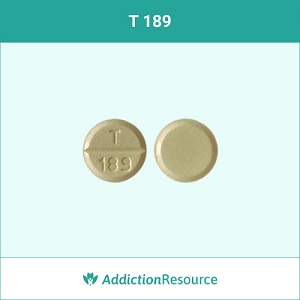The K8 pill, commonly known as oxycodone, is a crucial pharmaceutical ally for pain management.
Prescribed for individuals grappling with various medical conditions leading to intense and often unbearable pain – such as post-surgical recovery, chronic ailments, or severe injuries – oxycodone plays a pivotal role in providing relief.
Read on to delve into the critical aspects of oxycodone utilization, starting with the vital importance of correctly identifying oxycodone pills, such as oxycodone 5mg, K8 pill, K18 pill or K57 pill, its prescribed usage, dosage considerations and potential side effects.
Table Of Contents:
What is Oxycodone?
Trade name: OxyContin® (among others)
Generic name: Oxycodone
Oxycodone is an opioid analgesic prescribed for the management of moderate to severe pain.
OxyContin, a commonly known trade name for Oxycodone, provides effective relief for various conditions causing significant pain, including post-surgical recovery, chronic ailments, and severe injuries. This medication is often prescribed when pain becomes debilitating and requires potent analgesia for improved quality of life.
Why Oxycodone Comes in Different Pill Presentations?
Oxycodone comes in various pill formulations, i.e., K8 pill to provide flexibility in dosage and accommodate the diverse pain management needs of patients. Each presentation is designed with distinct characteristics, catering to individualized treatment plans.
Dosage Flexibility
Different formulations allow for precise dosage adjustments, ensuring patients receive an appropriate amount of oxycodone based on the severity of their pain.
Individualized Treatment
Patients experience pain differently, and their response to medications varies. Various pill presentations accommodate individualized treatment plans, addressing specific pain levels and tolerances.
Gradual Pain Management
Lower-dose formulations, such as Oxycodone 5mg or K18, may initially be prescribed for mild pain. Higher-dose options like the oxycodone k8 pill or M 30 can be introduced when pain intensity increases, offering a gradual approach to pain management.
Treatment Initiation and Maintenance
Different presentations allow effective treatment initiation with lower doses, minimizing the risk of adverse effects. Healthcare providers can adjust formulations as pain evolves to maintain optimal pain relief.
Patient Compliance
The availability of various presentations ensures that patients can receive medication conveniently and appropriately, promoting better adherence to the prescribed treatment plan.
Reduced Side Effects
Tailoring the dosage to the specific needs of the patient helps minimize side effects and potential complications associated with opioid use, promoting safer and more effective pain management.
15 Oxycodone Pill Presentations
Many people may ask, ‘What does oxycodone look like?’. To help you rule out any confusion when administering or taking oxycodone, here are details about specific oxycodone pill variations:
Oxycodone 5mg
- Oxycodone 5mg is a generic formulation available in various shapes and colors, depending on the manufacturer.
- It contains 5 mg of oxycodone hydrochloride.
- Often prescribed as an initial or maintenance dose for pain relief.
K8 Pill

- This oxycodone pill, identified by the imprint “K 8,” is a round, green tablet.
- It typically contains 15 mg of oxycodone hydrochloride.
- This formulation is prescribed for moderate to severe pain and allows for a precise and measured dose.
K18 Pill
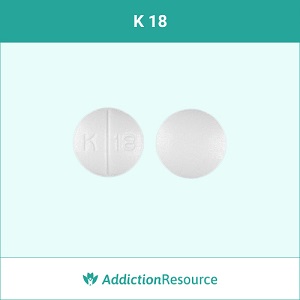
- The K18 pill is a small, white, round, pill with a k 18 on a pill. A vertical groove separates K and 18.
- Commonly containing 5 mg of oxycodone hydrochloride, it serves as a lower-dose option for pain management.
- Physicians may prescribe this formulation for individuals requiring a milder analgesic effect.
K57 Pill
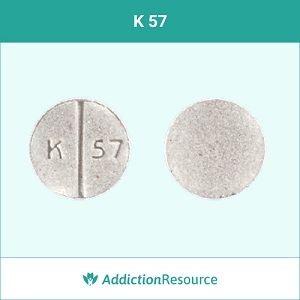
- The K 57 pill is a round, blue tablet imprinted with “K 57.”
- Typically, it contains 20 mg of oxycodone hydrochloride.
- This formulation is often prescribed for more intense pain management.
A 214 Pill

- Blue, round tablet imprinted with “A 214.”
- Contains 30 mg of oxycodone hydrochloride.
- A higher-dose option for severe pain relief, often in cases requiring extended analgesia.
M 30 Pill
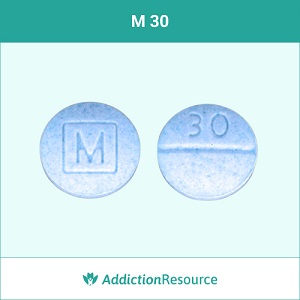
- Blue, round tablet imprinted with “M 30.”
- Contains 30 mg of oxycodone hydrochloride.
- Similar to A 214, a potent formulation for addressing severe and chronic pain. It is also known as the m 30 perc.
A 51 Pill

- Round tablet imprinted with “A 51.”
- Contains 20 mg of oxycodone hydrochloride.
- Prescribed for moderate to severe pain, offering an alternative to the K 57 pill.
V 48 12 Pill
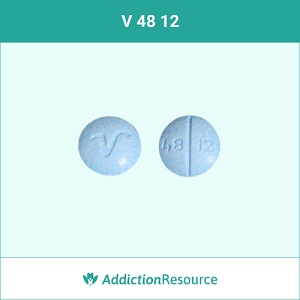
- Light blue with a stylized V on one of its surfaces, round tablet imprinted with “V 48 12.”
- Contains 30 mg of oxycodone hydrochloride.
- A high-dose option for severe and chronic pain conditions.
U24 Pill

- Blue, round tablet imprinted with “U24” on one side.
- Contains 30 mg of oxycodone hydrochloride.
- Another 30 mg variant, provides an alternative for potent pain relief.
T 189 Pill
- Yellow, round tablet imprinted with “T 189.”
- Contains 15 mg of oxycodone hydrochloride.
- Prescribed for moderate to severe pain.
T 188 Pill
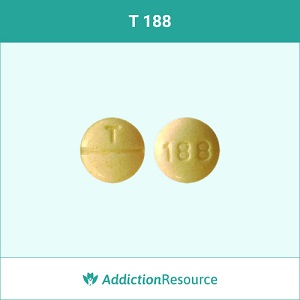
- This is a round, yellow tablet. One side is imprinted with the number 188, and the other side has the letter T.
- Contains 15 mg and 15 mg of oxycodone hydrochloride.
- It can be distinguished from the T 189 pill because one face has the number 188, and the other only has the letter T.
224 Pill
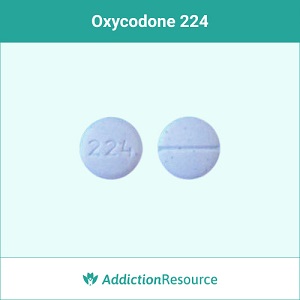
- Blue, round tablet imprinted with “224.”
- Contains 30 mg of oxycodone hydrochloride.
- Another variant for higher-dose pain relief.
Cor 224 Pill
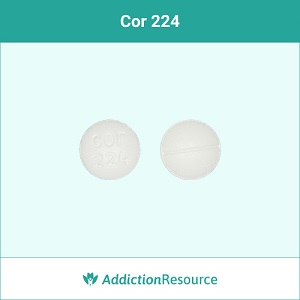
- White, round tablet imprinted with “Cor 224.”
- Contains 5 mg of oxycodone hydrochloride.
- Prescribed as a low-dose option for effectively managing pain.
U 15 Pill
- Peach, round tablet imprinted with “U 15.”
- Contains 5 mg of oxycodone hydrochloride.
- A lower-dose option for managing mild to moderate pain.
Dosage Forms of Oxycodone
Oxycodone is available in several forms, providing versatility for patients.
The forms of this medication include the following:
- Extended-release tablets
- Tablets (immediate-release)
- Extended-release capsules
- Capsules (immediate-release)
- Solution
- Concentrate
Side Effects of Oxycodone
Oxycodone or the K8 pill, like any opioid medication, can cause various side effects. It’s crucial to note that individual responses may vary, and not everyone will experience these effects.
Common side effects of oxycodone include2:
- Constipation and gastrointestinal issues: Constipation and other gastrointestinal problems, including abdominal pain or bloating.
- Nausea and vomiting: Some individuals may experience nausea or vomiting, especially when starting the medication.
- Drowsiness or dizziness: Oxycodone can cause drowsiness or dizziness, impacting cognitive and motor functions.
- Itching or sweating: Opioids can induce skin reactions like itching or increased sweating.
- Respiratory depression: In high doses or when misused, the K8 pill can suppress respiratory function. This is a severe side effect that requires immediate medical attention.
- Confusion or mental fog: Some individuals may experience confusion or difficulty concentrating while taking oxycodone.
- Urinary retention: Opioids can impact bladder function, leading to difficulty in urination
- Hypotension: Oxycodone may cause low blood pressure, leading to lightheadedness or fainting.
- Dependency and withdrawal: Prolonged use of opioids, even when taken as prescribed, may lead to physical dependence. Abrupt discontinuation can result in withdrawal symptoms.
Approach Oxycodone with Care
Remember, Oxycodone is a Schedule II drug, requiring a prescription from a medical professional. Misuse may lead to side effects, addiction, overdose, or worse.
If you are facing Oxycodone addiction, you are not alone. Addiction recovery options like cognitive behavioral treatment and alternative approaches are available. Recovery goes beyond overcoming addiction; it involves establishing a lifestyle free from the desire for addiction.
Find support and community with us to enhance your journey towards a fulfilling and addiction-free life.
People Also Ask
What does K 8 mean on a pill?
A table with a K 8 pill imprint indicates it contains 15 mg of oxycodone hydrochloride. This medication is commonly prescribed for moderate to severe pain management and should only be used under the supervision of a healthcare professional.
Is Oxycodone the same as Percocet?
No, Oxycodone and Percocet are not the same. Oxycodone is an opioid pain medication, while Percocet is a combination of Oxycodone and Acetaminophen. Percocet relieves pain and reduces fever, while Oxycodone is solely an analgesic.
What is a pill with the letter K on it?
A pill with the letter “K” on it typically indicates the manufacturer’s imprint rather than a specific medication. It is crucial to check additional markings, colors and shapes for accurate identification.
Hope Without Commitment
Find the best treatment options. Call our free and confidential helpline
Most private insurances accepted
Page Sources
- Moradi, M., Esmaeili, S., Shoar, S., & Safari, S. (2012). Use of Oxycodone in Pain Management. Anesthesiology and Pain Medicine, 1(4), 262-264.
- Sadiq, N. M. (2022, August 22). Oxycodone. StatPearls - NCBI Bookshelf.
- Riley, J., Eisenberg, E., Müller-Schwefe, G., Drewes, A. M., & Arendt-Nielsen, L. (2007). Oxycodone: a review of its use in the management of pain. Current Medical Research and Opinion, 24(1), 175–192.
- Preuss, C. V. (2023, April 29). Prescription of controlled substances: benefits and risks. StatPearls - NCBI Bookshelf.

 Authored by
Authored by  Reviewed by
Reviewed by 
